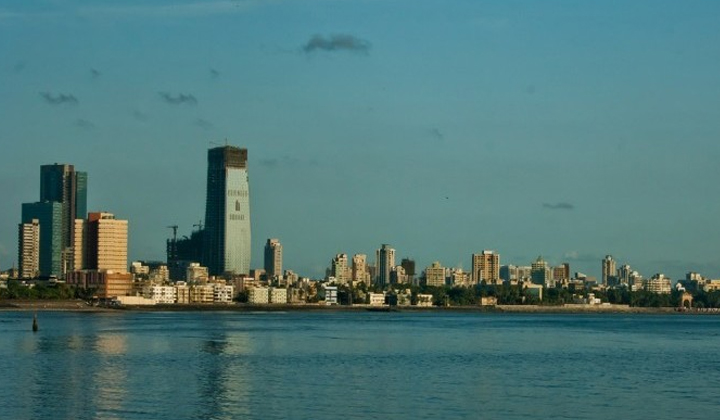Trending Now
- Action should be taken against the cops who protect the Ganja accused in TN : PMK leader Anbumani Ramdoss
- Votes that go to Congress or INDI alliance is a waste : PM Modi
- Court grants one-day custody to police to investigate Youtuber Savukku Shankar.
- We actually got our independence only in 2014. The independence to change this country as it should be : Actor , politician, Kangana Ranaut
Real Estate
Will Delhi Development Authority’s land pooling policy put a brake on NCR’s growth story?
![]() July 15, 2015
July 15, 2015
The urban development ministry notified operational guidelines for implementing the land pooling policy in Delhi this week. The policy will make it possible to construct around 25 lakh housing units in the next six to eight years. This is in line with the housing shortage spelt out in Master Plan Delhi 2021 which was notified in 2013.
“The authority has not acquired any land in the city in the past decade due to the stringent provisions of the Land Acquisition Act. It is a time-consuming process. This policy will help us develop infrastructure without acquiring land and a total of 20,000 hectares will be opened to urbanisation. We expect that 25 lakh houses will come up in the next six to eight years and this will meet the demand spelt out in the MPD 2021. The land pooling policy will be a turning point as far as housing needs of Delhi are concerned,” says Balvinder Kumar, vice chairman, Delhi Development Authority.
Although DDA hopes to implement the policy in the next two months, it will have to wait for the Delhi government to notify 89 villages as development areas. Before that, the government has to declare 89 of these villages as urbanised.
The important question, however, is whether the new housing expected to come up in Delhi will impact the real estate markets in Noida and Gurgaon, which are already reeling under the pressure of a huge supply-demand gap? If yes, then what kind of damage is likely to be done?
According to JLL India Research, unsold inventory as of March 31, 2015 in Noida is 1,07,000 units and that of Gurgaon is 24,000 units. Until a few months, prices in NCR were generally speculative and not aligned with demand and investor activity was huge. The immediate impact of operational guidelines getting notified may not be much as construction in Delhi’s new zones – J, K (I and II), L, N and P (I and II) – is yet to begin. But investors in NCR will start to feel the heat once housing stock takes shape in Delhi.
Publish guidelines for smart cities first
Delhi Development Authority plans to develop 20,000 hectares in Dwarka in southwest Delhi, Rohini and Narela in the northwest as smart cities equipped with uninterrupted power, water and wi-fi connectivity. But experts say that in the absence of a clear definition of what a smart city is, this may not be an easy task to accomplish.
Besides, these are pure greenfield developments – virgin land being developed with modern infrastructure cannot exist in isolation. The city needs to redevelop the unauthorised regularised colonies, equip them with basic facilities, say town planning experts.
“Our plan is to develop 20,000 hectares under the pattern of a smart city. We have already appointed a consultant to advise us on the matter. A project management consultant will be appointed in the next three months. A memorandum of understanding will also be signed with Barcelona City. Subsequently, both the PMC and technical advisers from Barcelona will work in tandem to develop these cities,” reveals Balvinder Kumar, VC, DDA.
Before such a mammoth task is undertaken, the definition of smart city should be made clear, says Amit Bhatt, strategy head – urban transport, EMBARQ India. Besides, creating smart cities is not only about constructing new structures but also about green and brownfield development and redevelopment of the core.
Prices to stabilise in the long term in NCR
The new stock expected to come up in Delhi , as per the land pooling policy, is likely to be priced at Rs. 5,000 to Rs. 12,000, depending on the location. This is in line with prices in the NCR, especially areas such as Noida, Manesar, Sohna. Currently, housing stock in Noida is priced between Rs. 4,000 and Rs. 7,000 per sq ft and in Gurgaon it’s Rs. 12,000 per sq ft. The entire range fits into both the Noida and Gurgaon markets.
In the mid to long term with a steady housing supply coming up in the Capital, prices will stabilise in NCR, says Ashutosh Limaye, national director – research, JLL India.
But some sectors in Gurgaon close to Delhi, especially in Dwarka Expressway, may face a challenge once housing stock starts to come up in Delhi’s new zones.
Also the benchmark price for these properties is based on prevailing prices in Dwarka. This may pose a big challenge in the mid term, especially when products in Delhi start selling for Rs. 5,000 per sq ft. Today, many projects along Dwarka Expressway are going for over Rs. 10,000 per sq ft. If six years later, projects in Delhi sell for Rs. 10,000 per sq ft, the price appreciation potential of projects located in Dwarka Expressway near the Delhi border may get stunted, says Anckur Srivasttava of GenReal Advisers.
This will, however, not lead to reverse migration. People working and residing in NCR will not automatically shift to Delhi. Neither will IT offices and other corporates. The demand factors will continue to remain the same but prices will stabilise.
Another gradual impact will be that developers active in NCR will slow down construction activity in these towns and the number of new launches will come down, says Limaye.
The growth story of emerging markets such as Yamuna Expressway and Sohna may also be pushed back by a few more years once Delhi’s land opportunity grows bigger, Limaye adds.
No apartments will be delivered under the policy before six years and, therefore, short-term impact looks unlikely. Also, to take the policy through to the operational level, the Centre, the state and DDA need to be on the same page.
Who will buy properties in Delhi?
Master Plan Delhi 2021 was notified in February 2007 and was to be reviewed within five years, keeping in view the changes during that period. The mid-term review started in 2011. The operational guidelines have been notified only in 2015. The document was put in place to take care of the growth and the incremental demand in Delhi but not the growth of Noida or Gurgaon.
The notification of these guidelines is already behind schedule and the pent up demand in Delhi is huge. “This stock should have been created at least six years ago. Delhi has grown several folds since. When work on it started in 2001, Noida and Gurgaon were emerging destinations, today they are both established areas. Therefore, the demand emanating in Delhi would largely be internal, it will come from people who work in Delhi and who wish to move into better homes,” says Srivasttava of GenReal Advisers.
Ramesh Menon of Certes Realty says that there are three factors that propel people to buy property in an area. These include economic activity, political stability and demand from the existing democracy to consume the product.
























